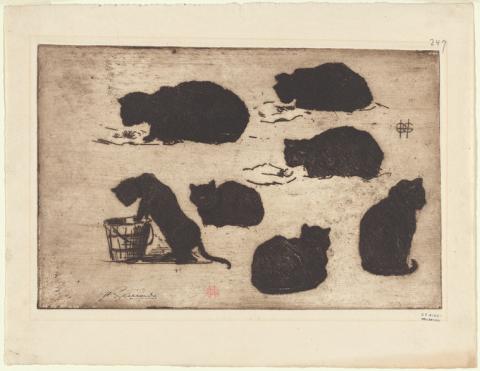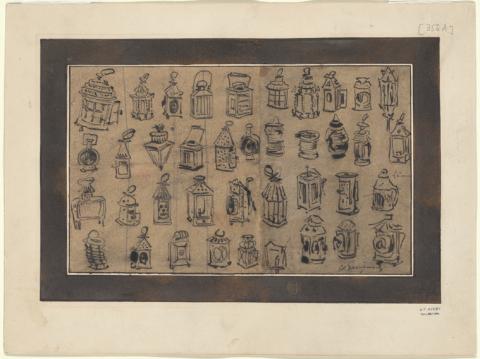Described by the influential nineteenth-century art critic Roger Marx as “the engraver of curiosity par excellence,” Henri-Charles Guérard was one of the most skilled and inventive French printmakers of his day. It was to Guérard that the Impressionist painter Édouard Manet turned whenever he needed help making etchings, no doubt owing to Guérard’s expertise as a professional printmaker as well as to his innovative approach to the medium. He reacted to a broad array of artistic styles and worked in a variety of print techniques, testing the boundaries of each. Particularly noteworthy in this regard are his works that respond to the nineteenth-century vogue for Japanese ukiyo-e woodcuts, which embody some of the artist’s most original expressions.
Thanks to a generous gift from the art collector and connoisseur Samuel Putnam Avery (1822–1904), The New York Public Library has the largest collection of Guérard’s work in the United States. The exhibition on the third floor of the Library will feature close to ninety of his prints, including many states and impressions that have only recently come to light and which reveal his range and virtuosity.



